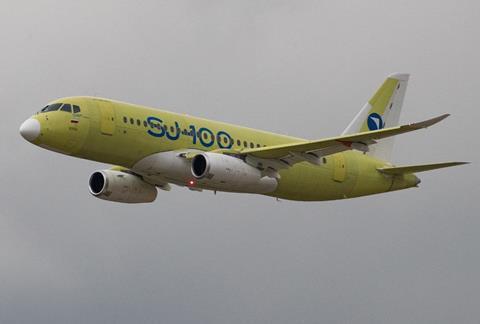Russia’s Yakovlev and electronic systems specialist KRET have completed development of the autopilot and autothrust algorithms for the SJ-100 twinjet.
The SJ-100 is the latest version of the Superjet 100, and features an increased proportion of systems produced domestically rather than by foreign suppliers.
Preliminary testing on the ‘electronic bird’ ground rig has been completed, says SJ-100 chief designer Kirill Kuznetsov, and the system will next be installed on an aircraft for flight and certification tests.
State technology firm Rostec says the algorithms for the SJ-100’s new control system are “fully consistent” with those on other modern passenger aircraft.
They will provide flight-director information to the pilot as well as fully-automatic flight control, it adds.

The algorithms are also capable of supporting automatic landing up to Category IIIb conditions, claims Rostec, and can maintain aircraft directional control on the runway centreline.
Over 2 million simulated landings are being conducted, with random starting conditions, as part of the statistical modelling to refine Category IIIa and IIIb capabilities.
“[This] modeling should confirm the fulfilment of the requirements for automatic landing algorithms established by the [Russian aviation regulations],” says Rostec.
KRET’s Moscow Institute of Electromechnics and Automation, which specialises in navigation and flight controls, has been working on the system’s development.


























